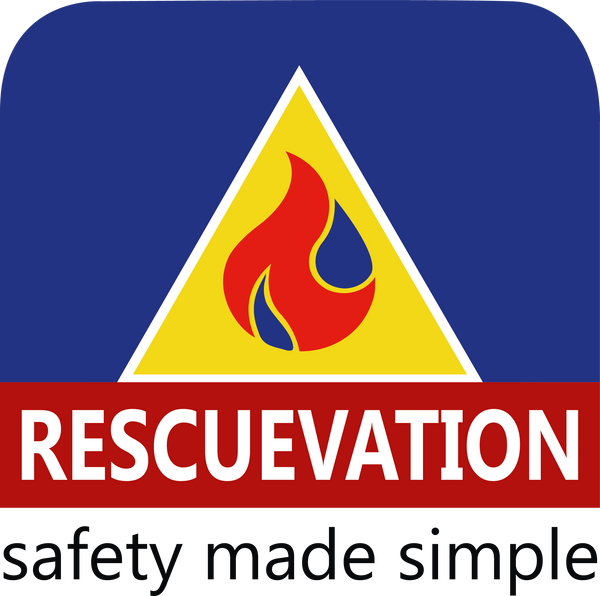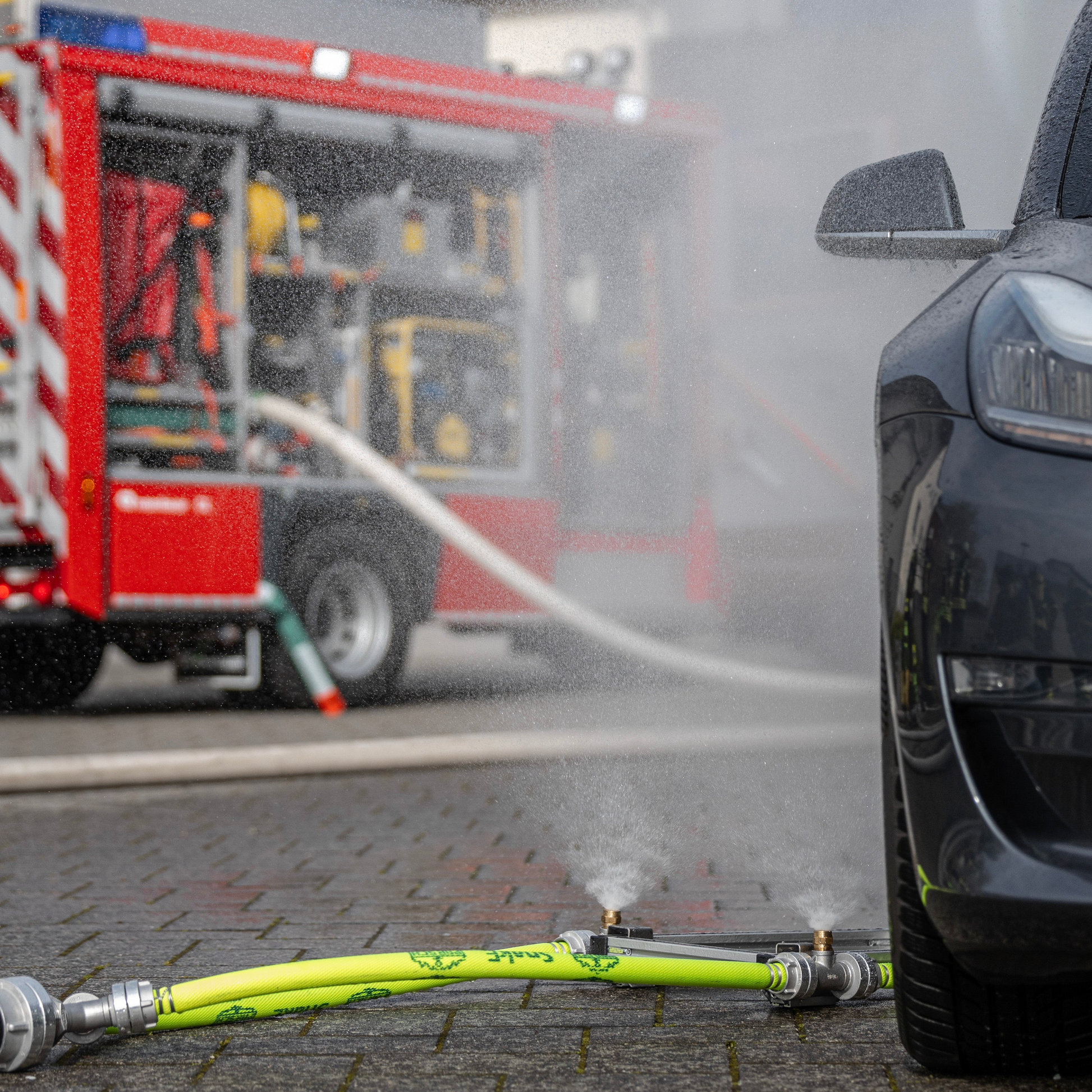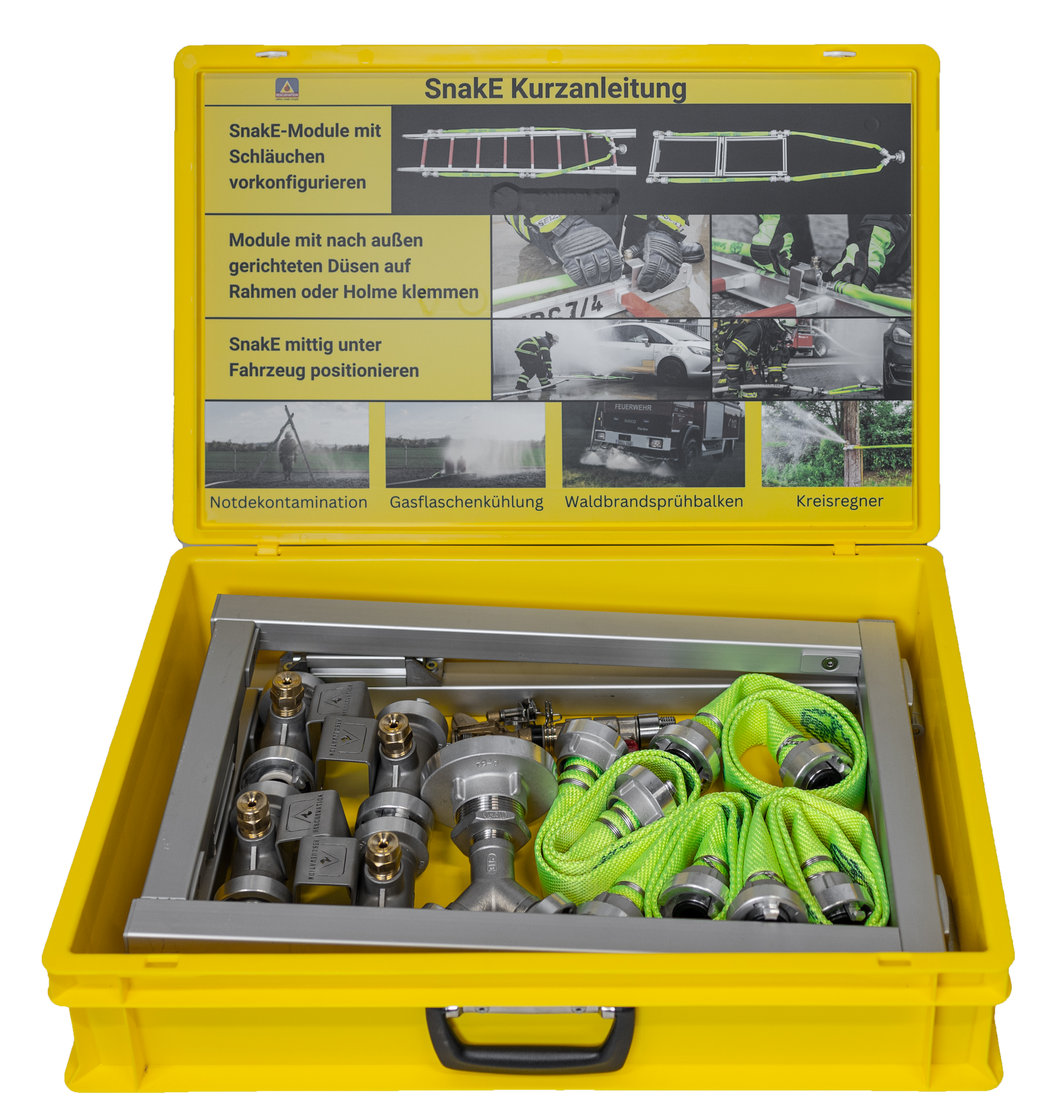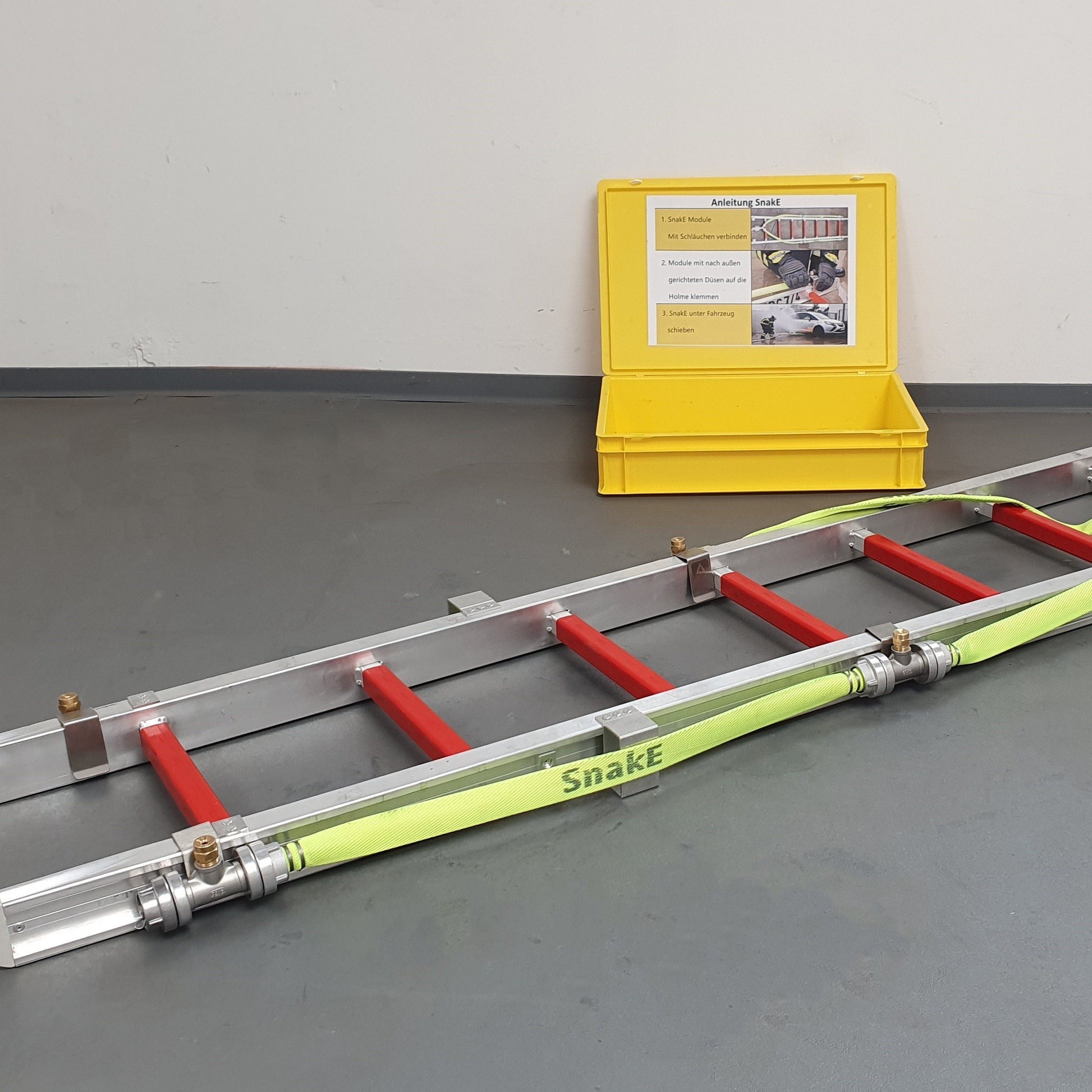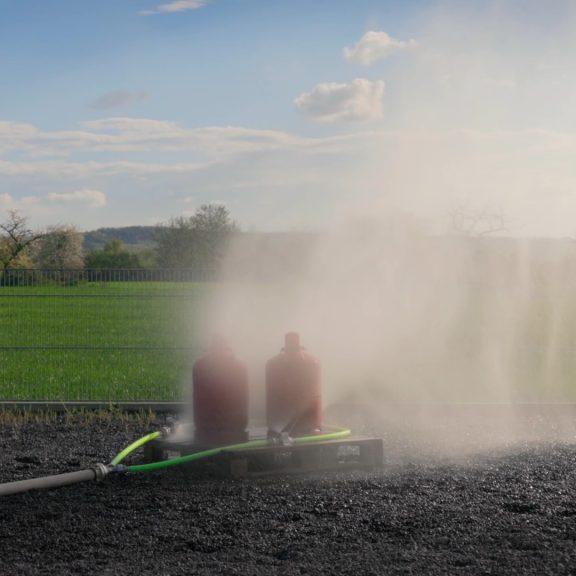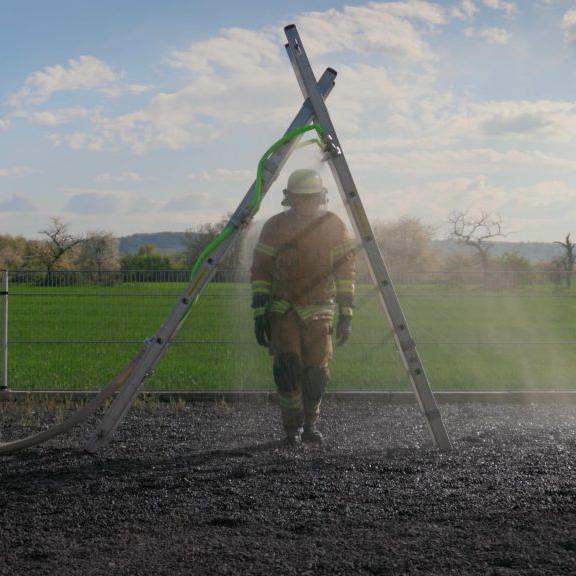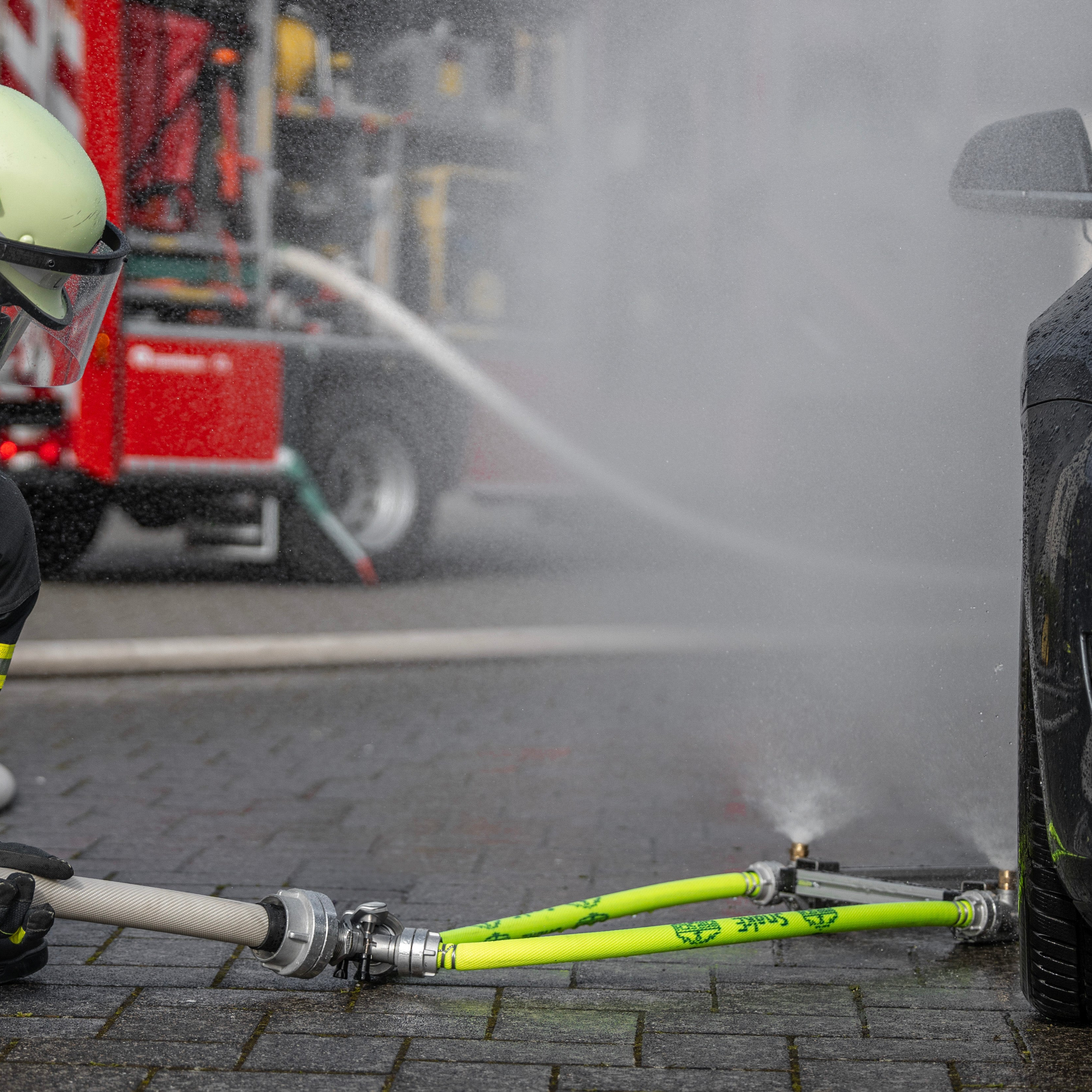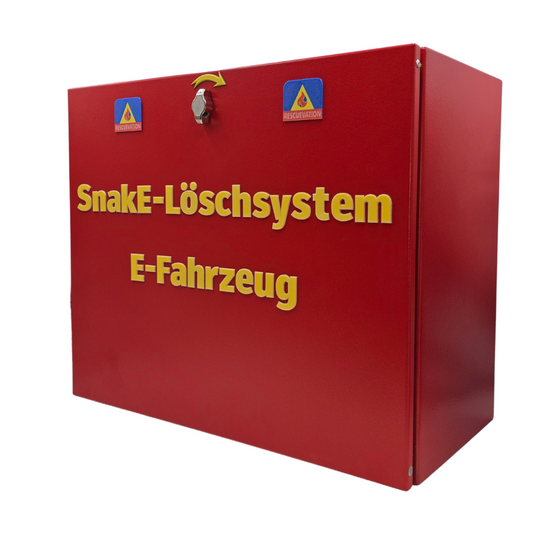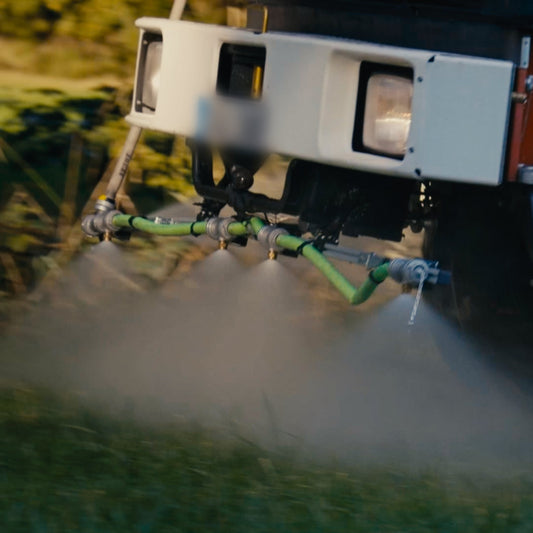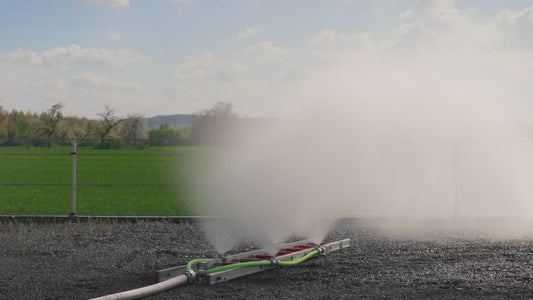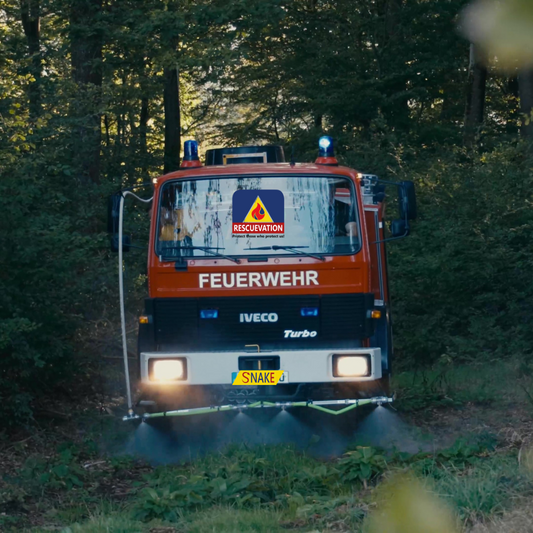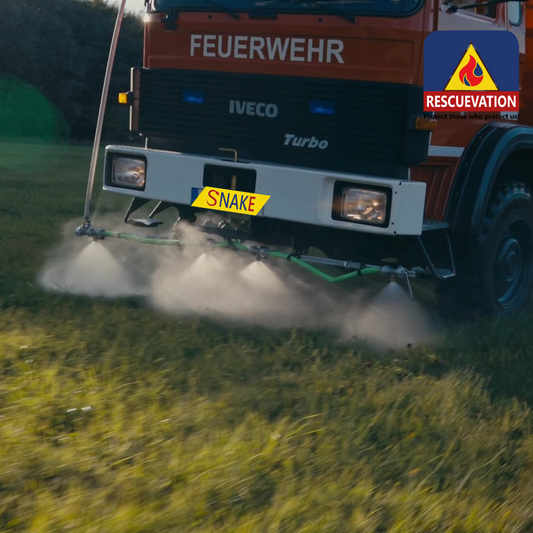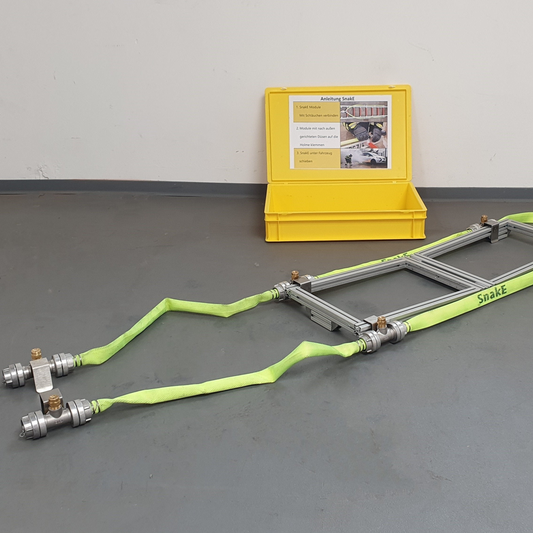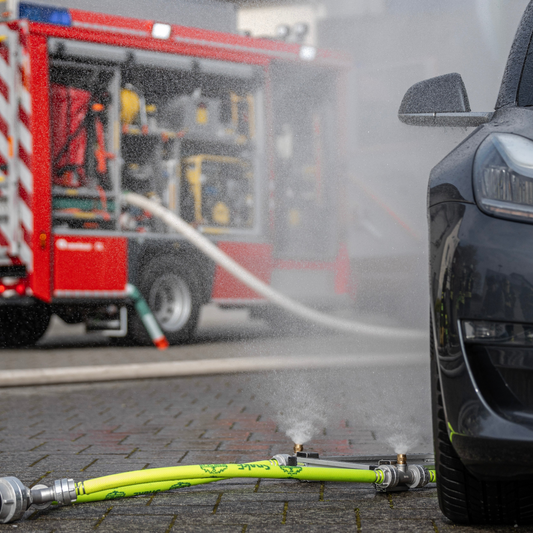Rescuevation Shop
SnakE 4 modulares Löschsystem für Elektrofahrzeuge
SnakE 4 modulares Löschsystem für Elektrofahrzeuge
Verfügbarkeit für Abholungen konnte nicht geladen werden
SnakE 4 – Das modulare Löschsystem: Die Lösung von E-Auto bis Waldbrand
1. Auspacken
2. Auf die per Norm überall vorhandene Steckleiter nach DIN 1147 aufstecken
3. Gezielt unter den Hochvoltspeicher schieben
→ Effizient von unten Kühlen & als Einsatzkraft fernab der Gefahren bleiben
SnakE ist unbegrenzt modular erweiterbar, sodass Fahrzeuge jeder Länge effizient gekühlt werden.
Dazu liefern wir ein optionales Alugestell, als Alternative zur Steckleiter.
Enthalten:
• Kunststoff Eurobox mit Scharnierdeckel 60cm*40cm*12cm
• 4 Düsenklemmen mit Düsen
• 1 Zuleitung mit Filter
• 4 Verbindungsschläuche
Share


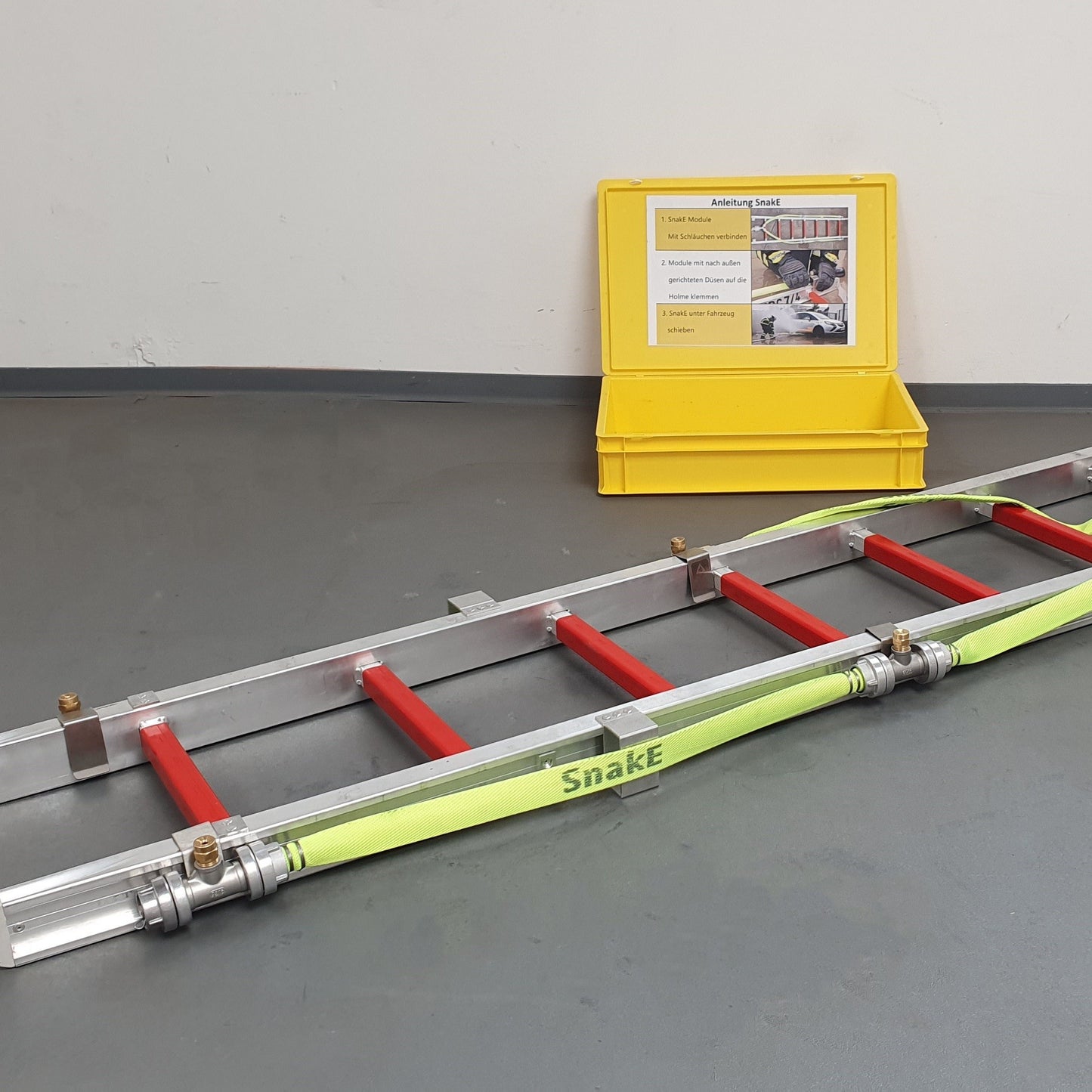
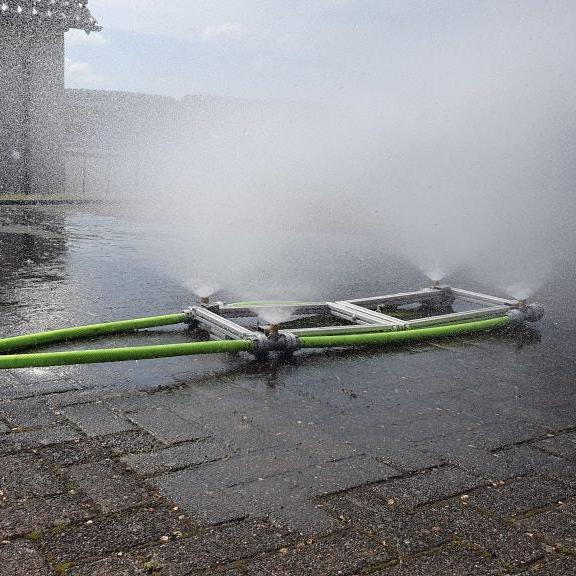
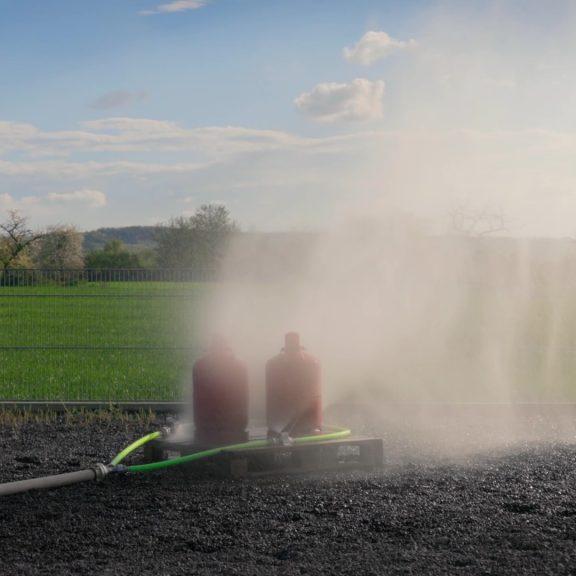
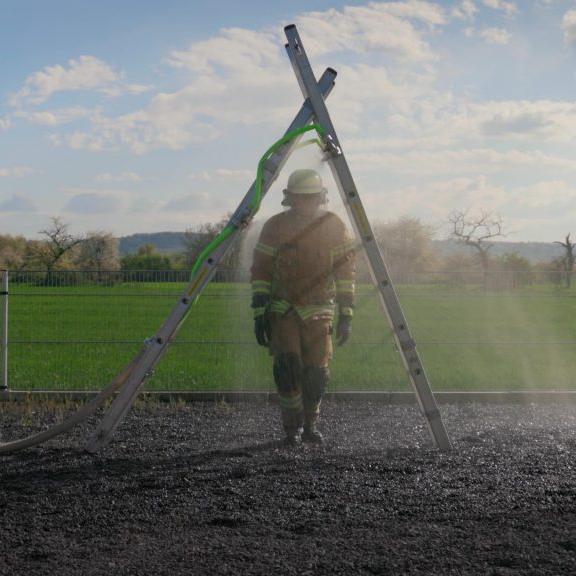
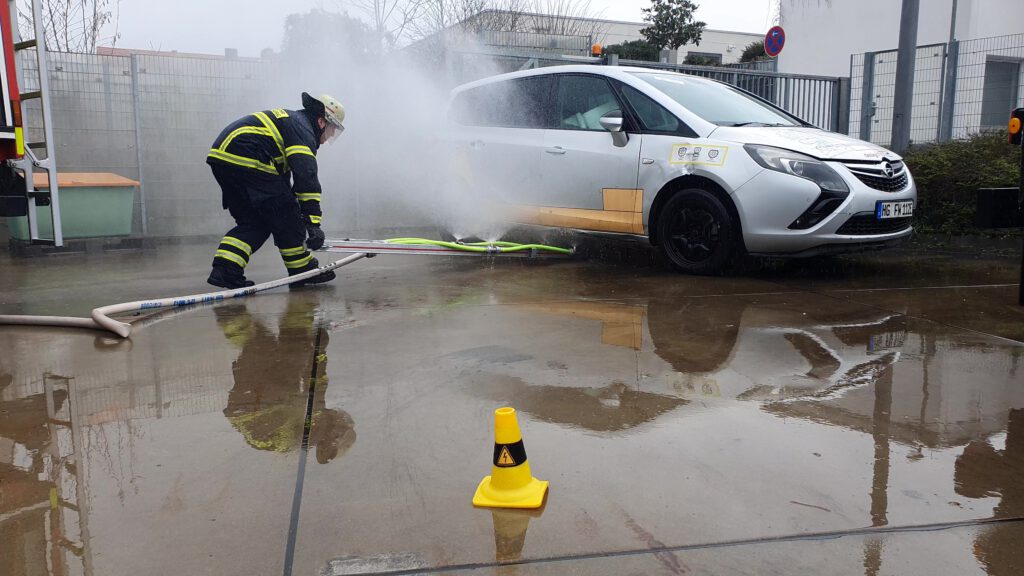
Die Anwendungsgebiete im kurzen Video:
SnakE - Feuerwehrinnovation als Sonderlöschgerät für alle Einsatzlagen
-
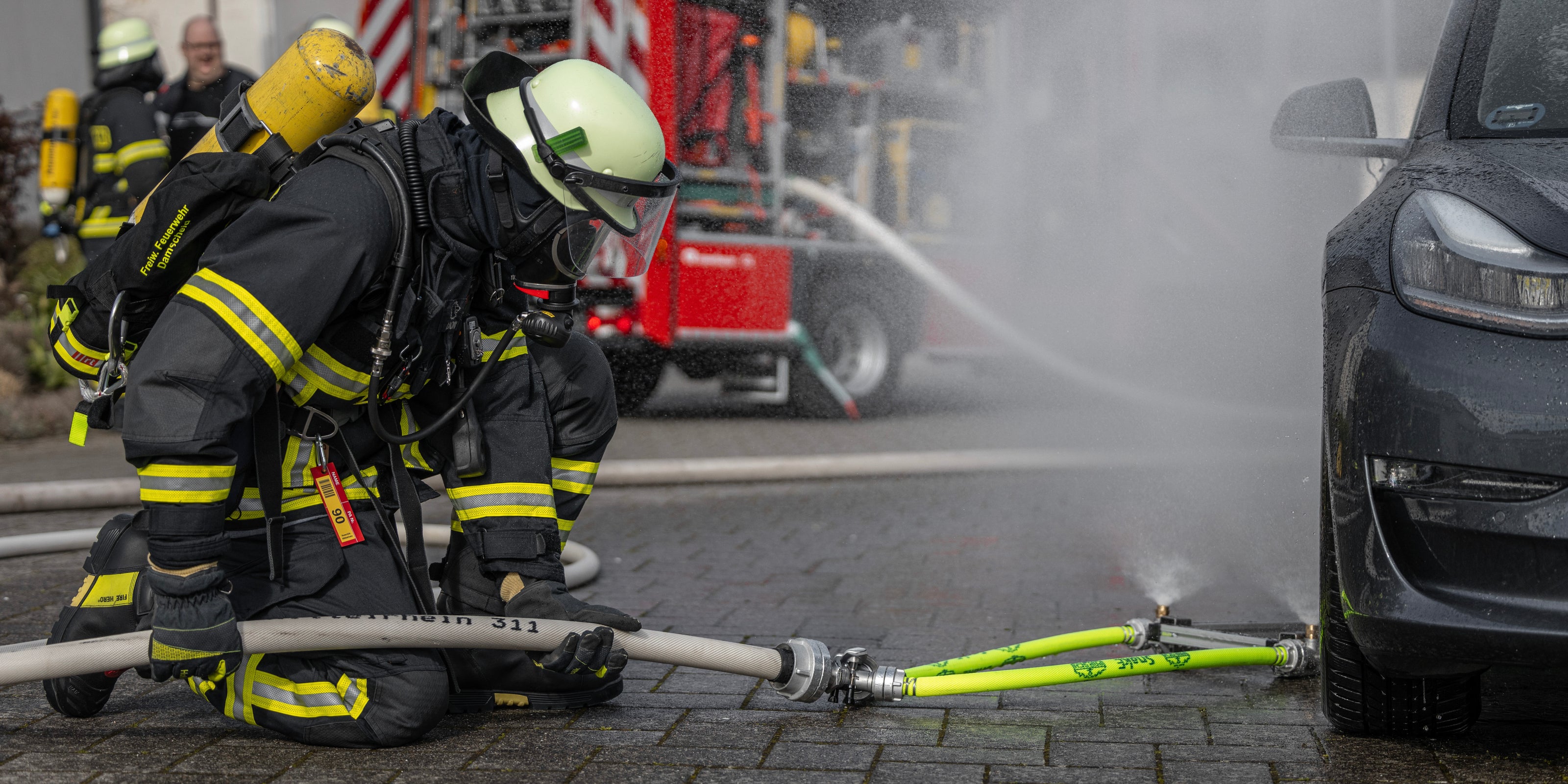
E-Auto Kühlsystem
SnakE® ist das intuitive, modulare Löschsystem zur schnellen und effizienten Unterbodenkühlung bei Elektrofahrzeugen.
Diese werden einfach auf eine Steckleiter oder einen speziell optimierten Aluminiumrahmen werkzeuglos aufgeklemmt und schon ist das SnakE®-System Einsatzbereit.
-
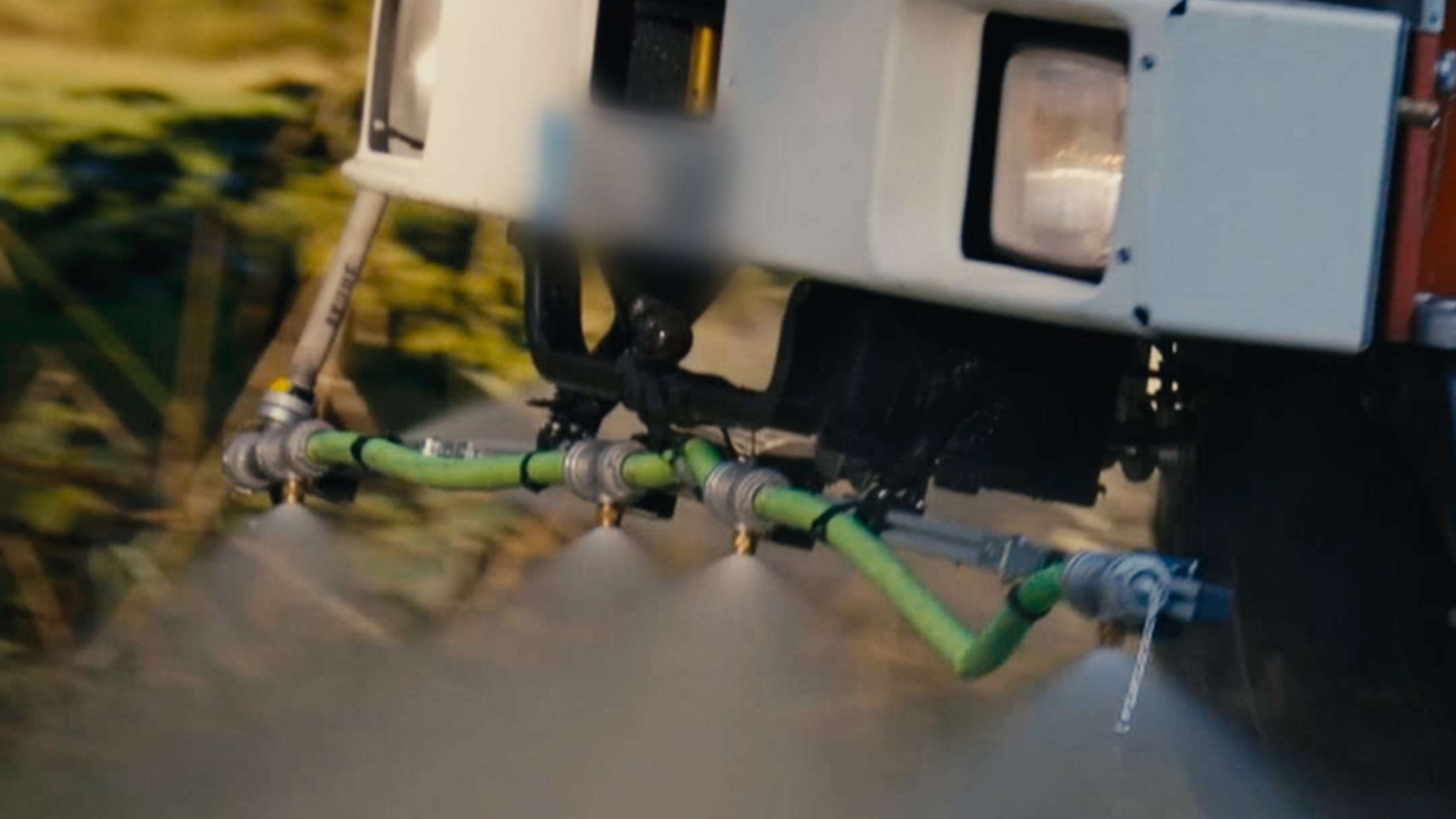
Nachrüstsprühbalken
Das Waldbrandset ist eine Erweiterung des SnakE-Set zur E-Auto Unterbodenkühlung und kann dafür auch weiterhin uneingeschränkt genutzt werden.
Die kompakten Düsenmodule werden einfach auf den faltbaren Nachrüstsprühbalken aufgeklemmt und mit Federriegeln gesichert. Zusammen wird das ganze System werkzeuglos an den Schäkeln des Fahrzeugs befestigt.
-
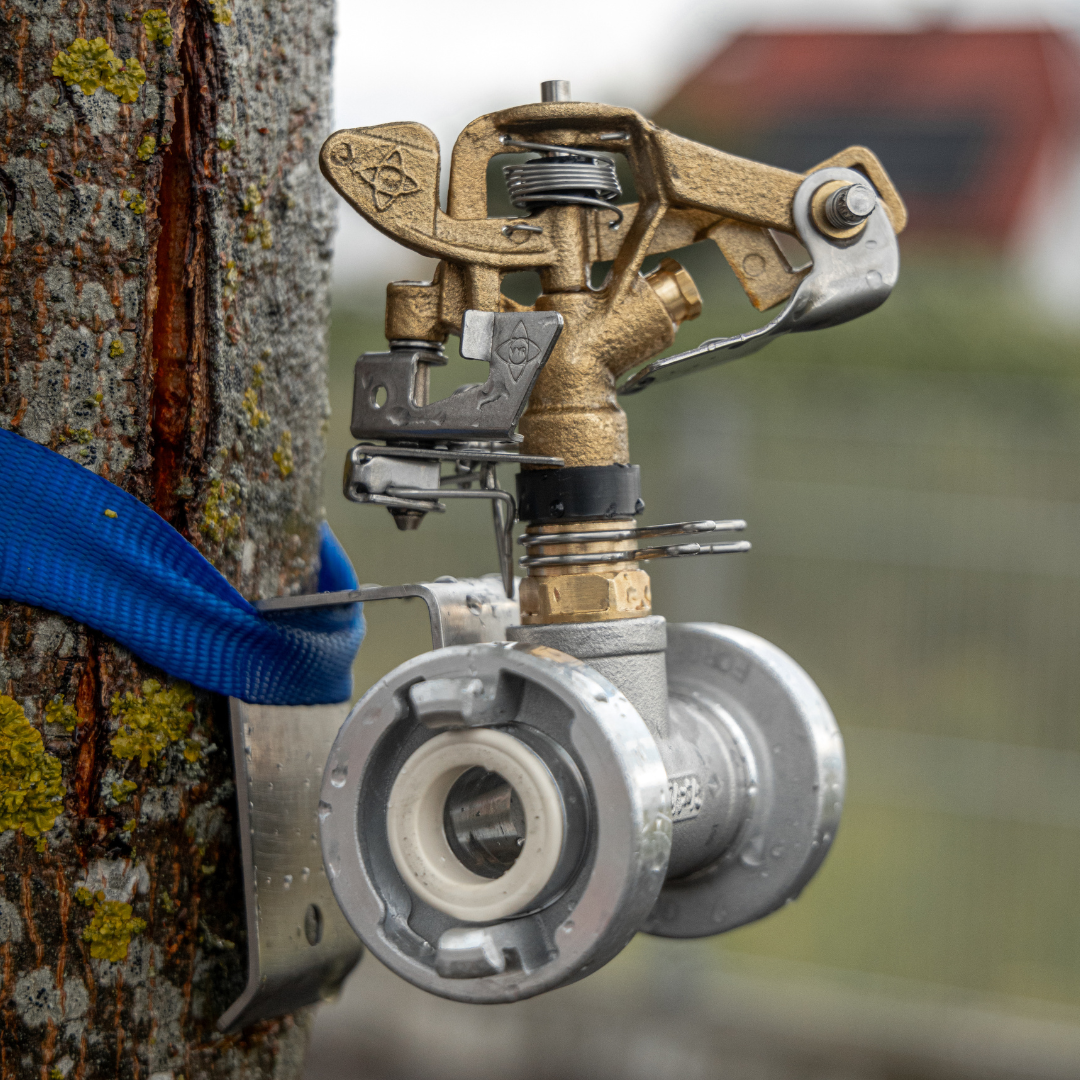
Kreisregner
Für die Nutzung als Kreisregner werden die gleichen kompakten Module, einfach auf Kreisregnerdüsen umgerüstet. Diese können einfach per Spanngurt an jeder geeigneten Struktur wie z.B. Bäumen befestigt werden. So können die Kreisregner auch effektiv im Gefälle eingesetzt werden.
-
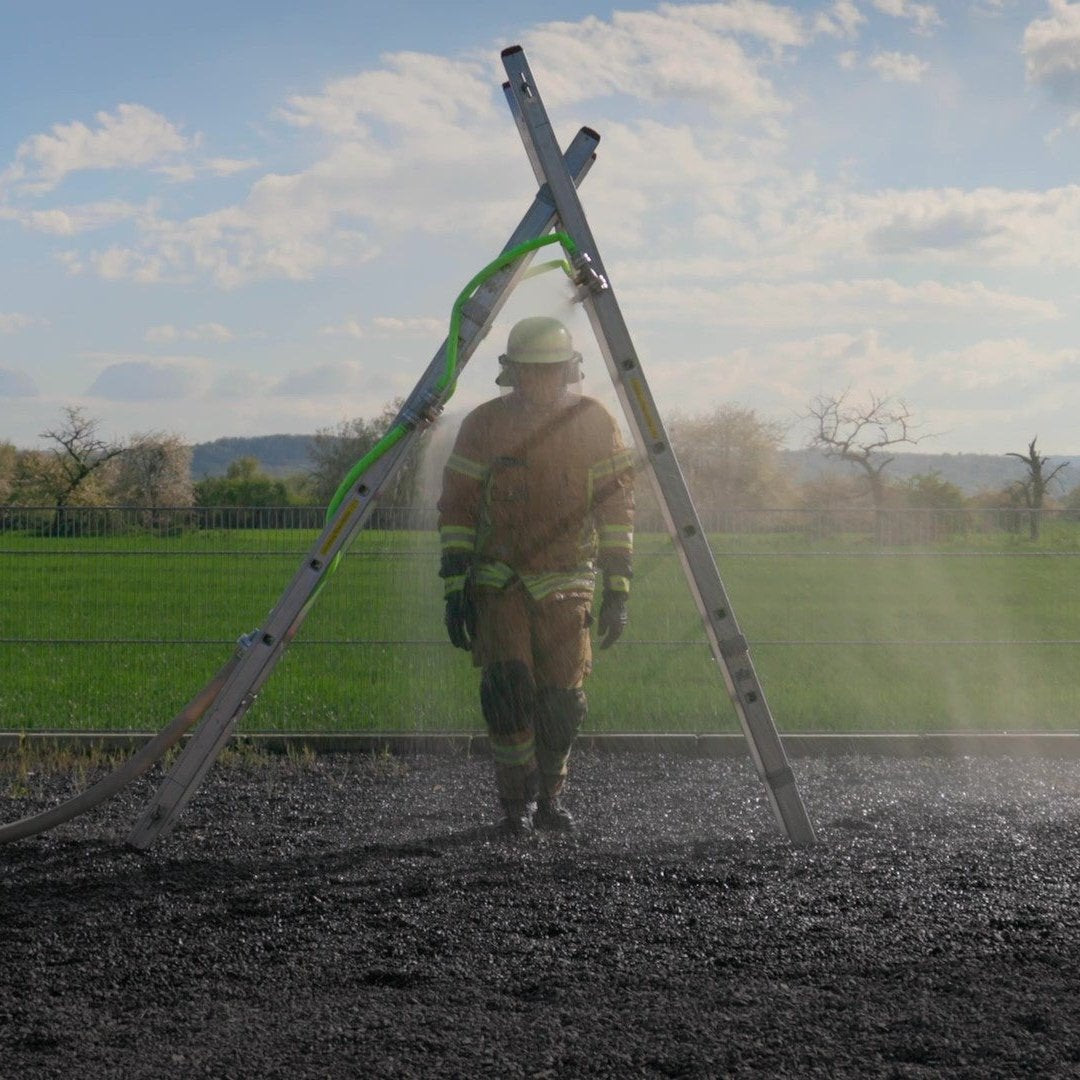
Notdekontamination
Mit den Modulen von SnakE und Steckleiterteilen kann eine effektive Not-Dekondusche schnell und einfach aufgebaut werden. Diese ermöglicht eine grobe Reinigung von Brandpartikeln aus allen Richtungen.
-
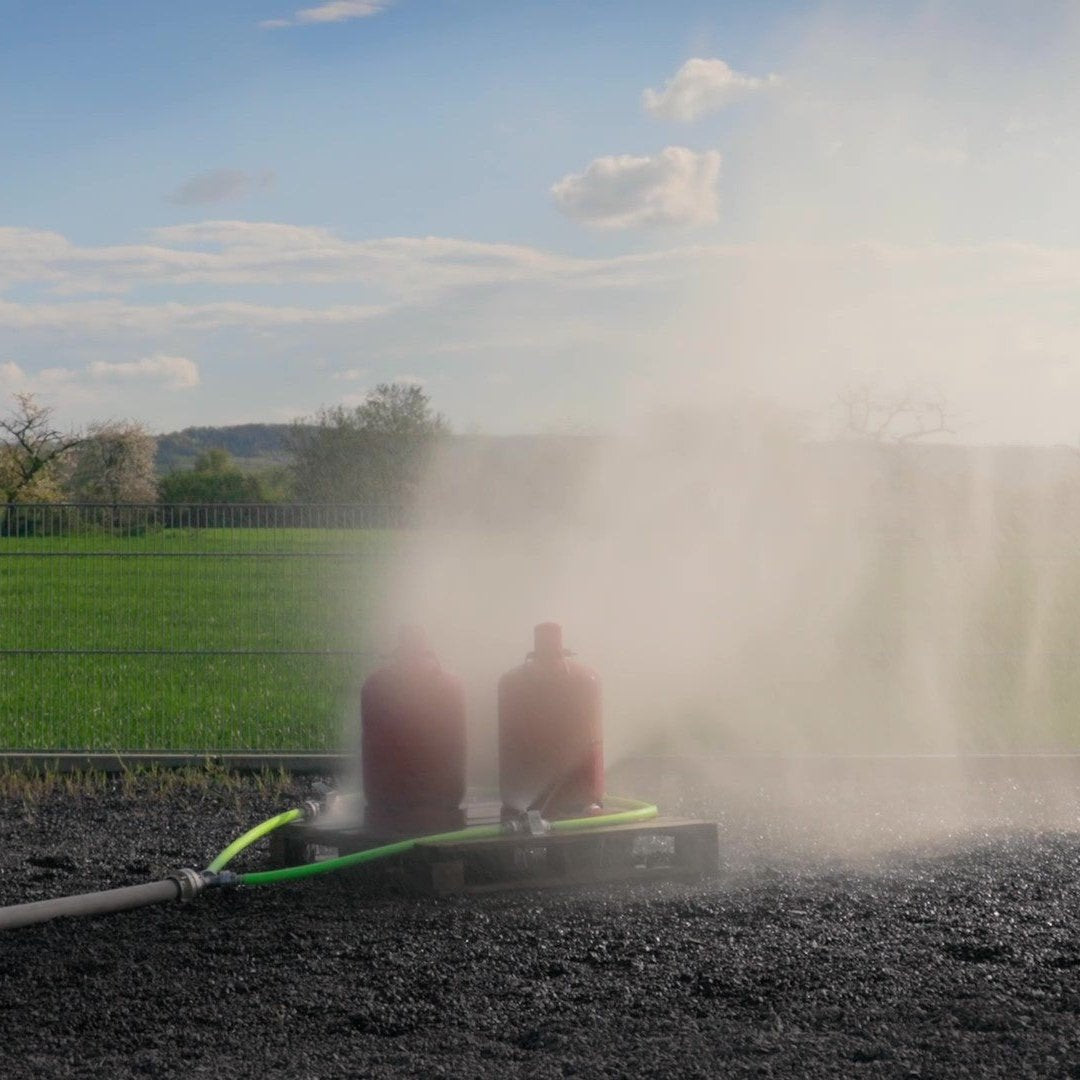
Gasflaschenkühlung
Die SnakE-Düsen können auch als Ringleitung angeordnet werden und so effektiv und Personalunabhängig zur Gasflaschenkühlung verwendet werden. So muss niemand in der Nähe von gefährlichen Acetylen-Flaschen bleiben
-
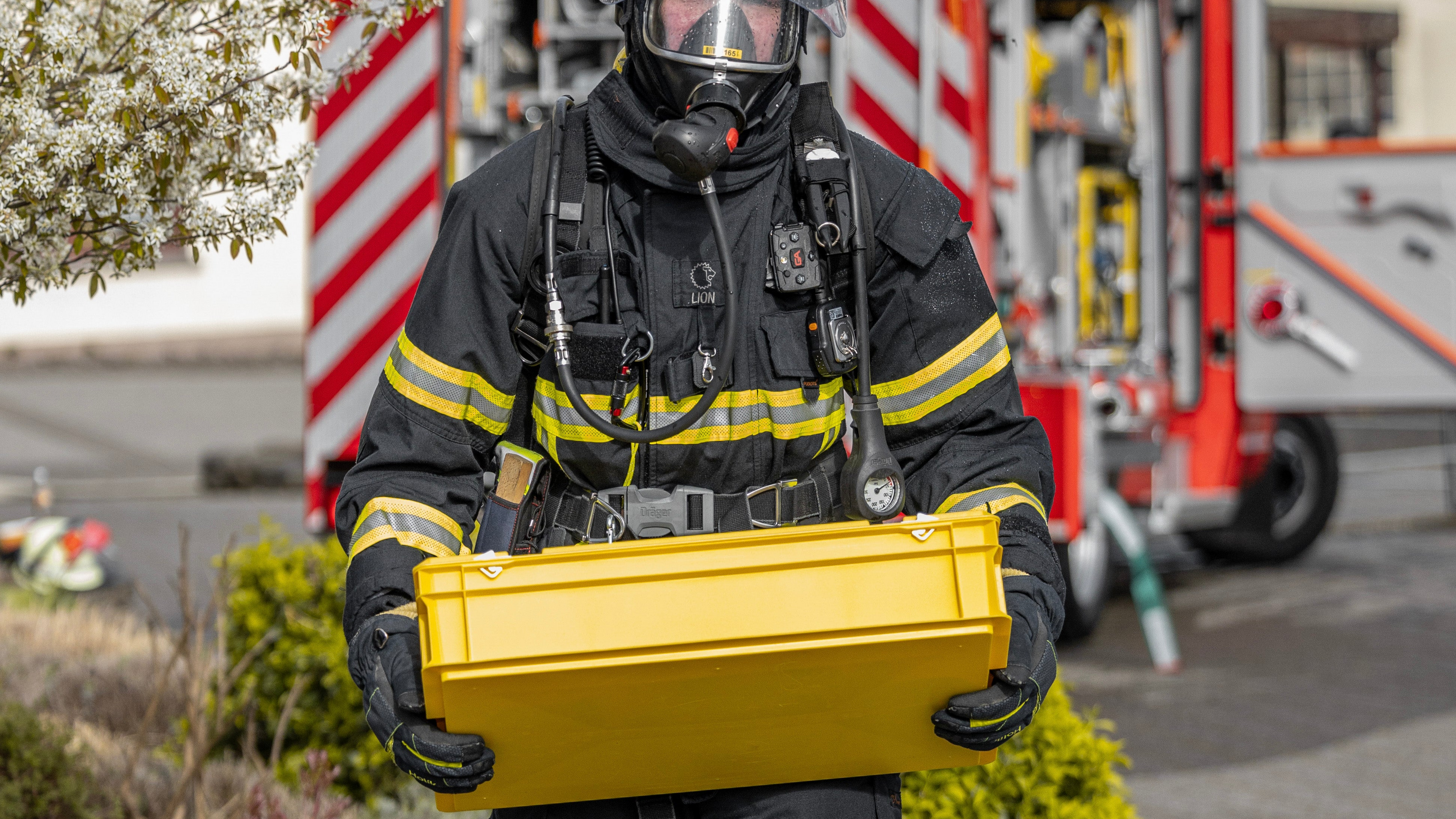
und noch vieles mehr!
SnakE 6 Professional modulares Löschsystem

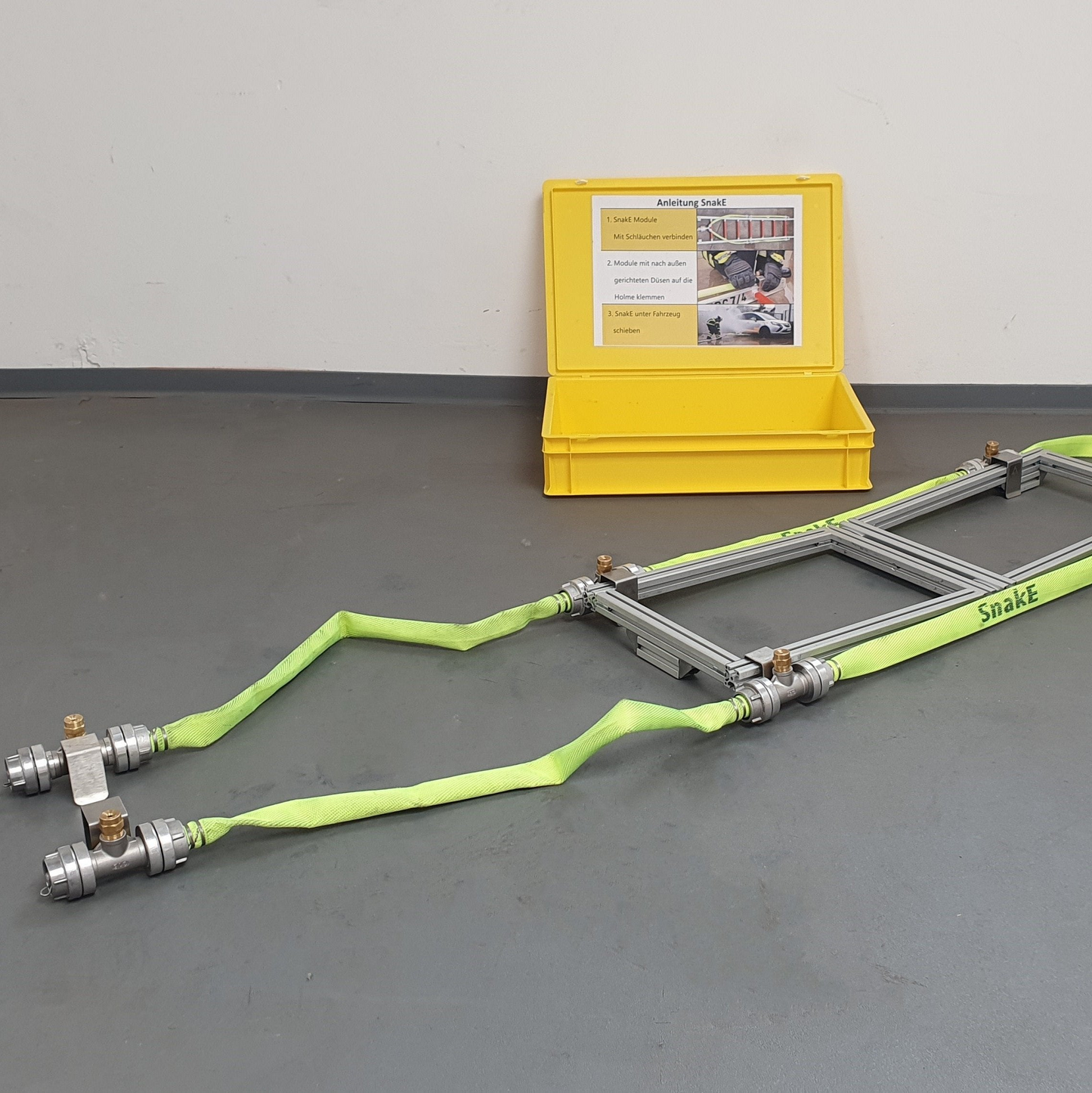

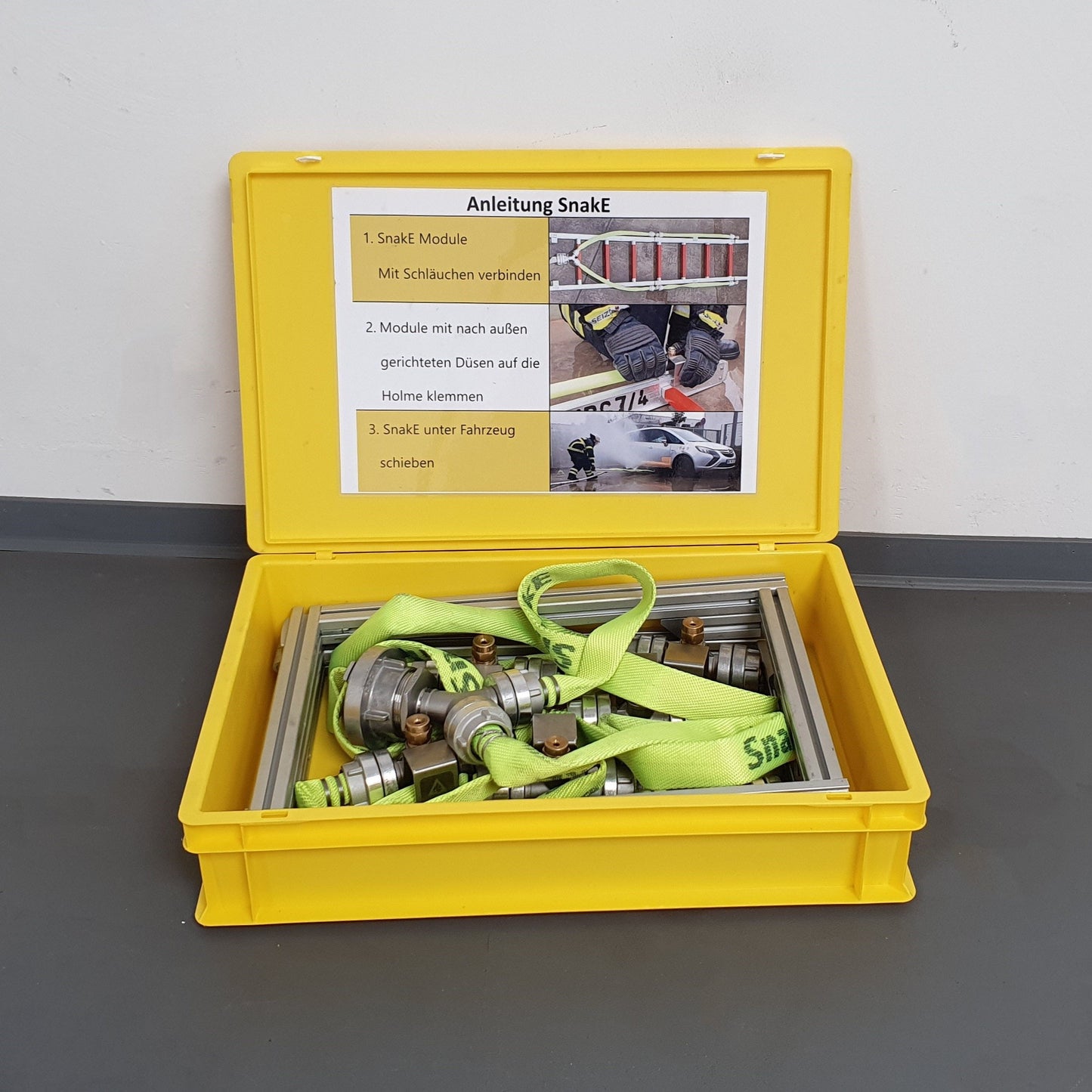
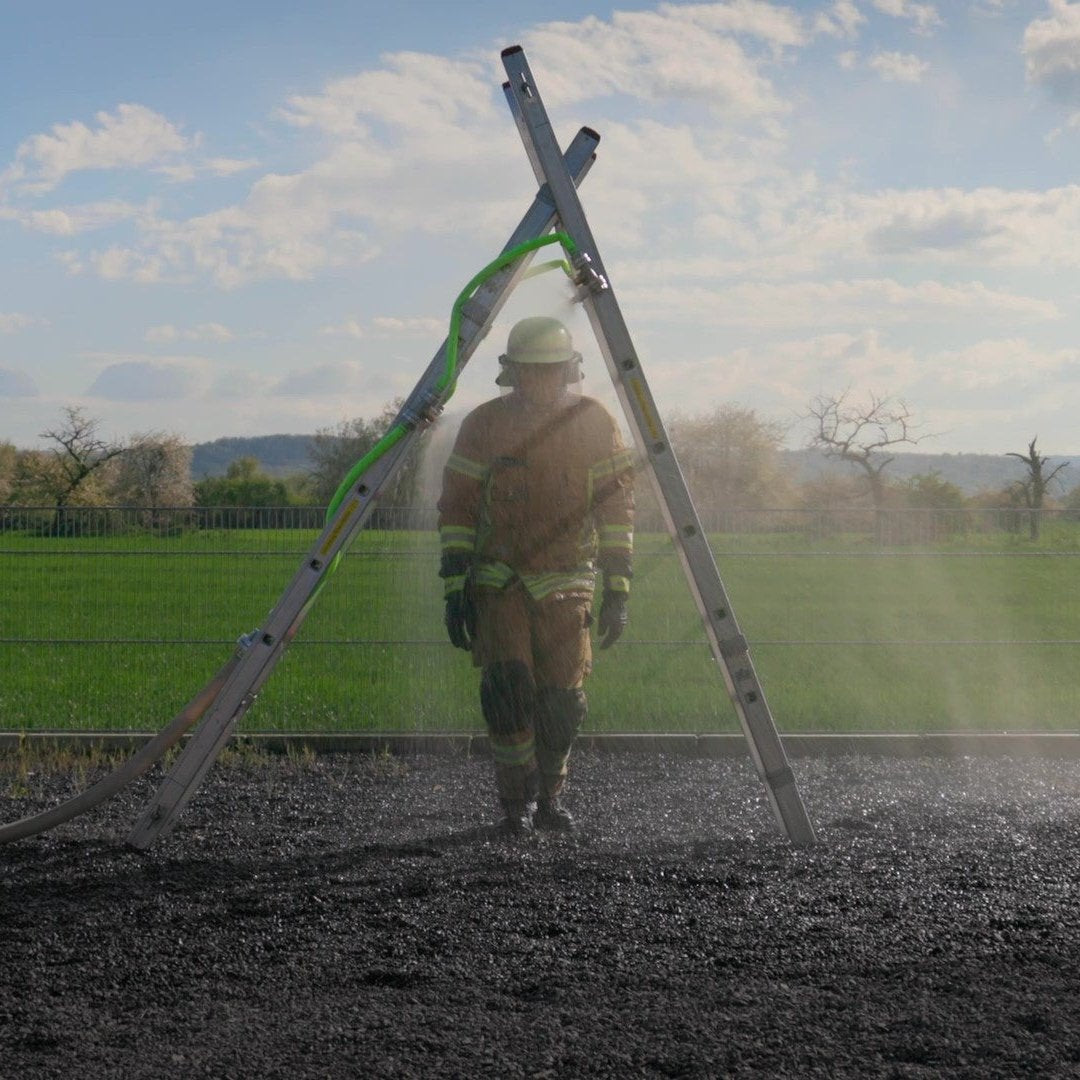

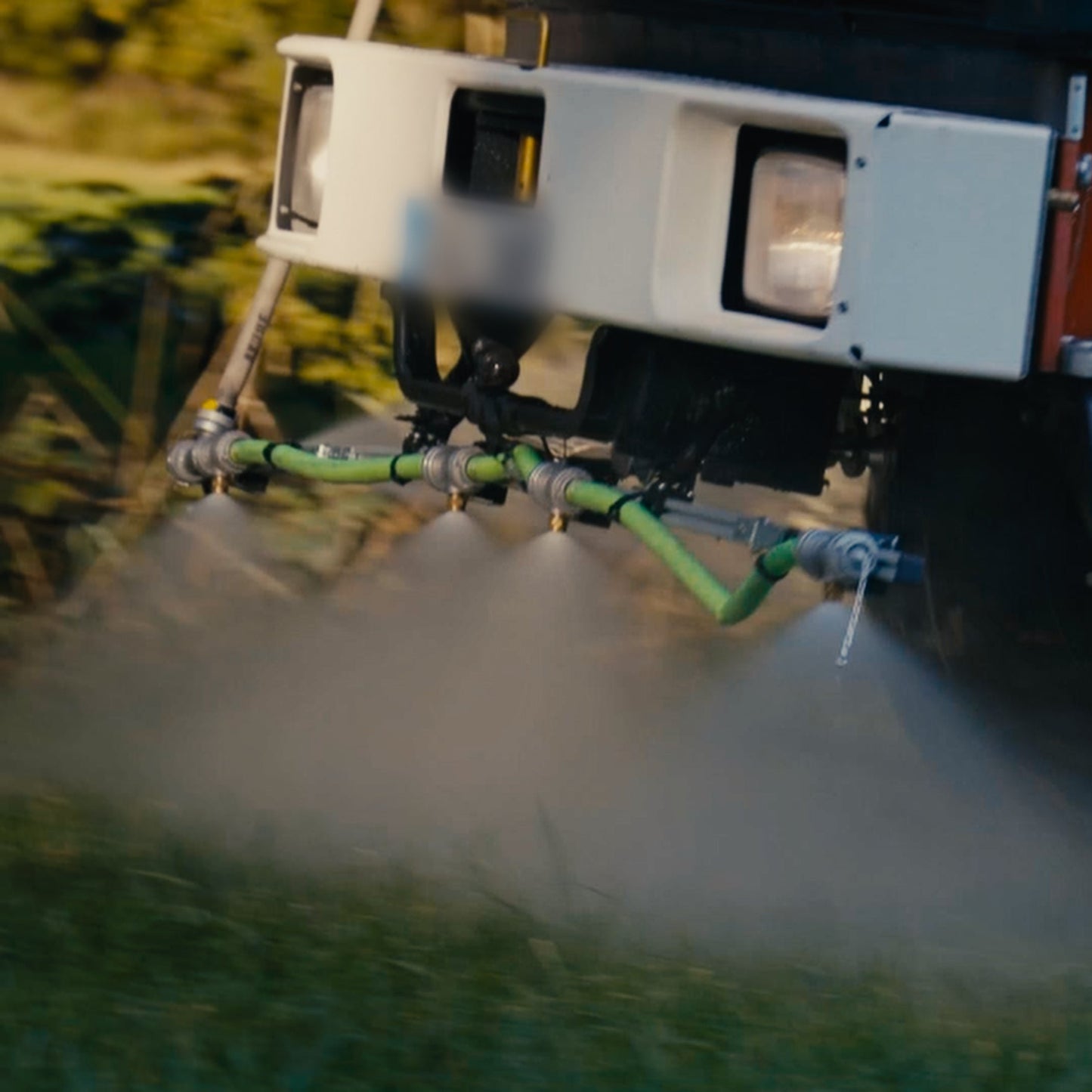

SnakE Produktvideo in Action:

Snake zur Unterbodenkühlung
EV-Brände bekämpfen
Unterbodenkühlung ist das einfachste und sicherste Verfahren zur effizienten Brandbekämpfung bei PKW mit Lithium-Ionen-Batterie als Hochvoltspeicher. Unterbodenkühlung wird auch in den Tesla Rettungsdatenblättern empfohlen.
Die Unterbodenkühlung vermeidet zusätzliche Fahrzeugschäden und bietet kein Risiko für eine unnötige Beschädigung der Batterie.
Die Leiter wird beständig durch SnakE gekühlt, außerdem entstehen in der Regel in Bodennähe keine so hohen Temperaturen.
Als Alternative bieten wir einen faltbaren Alurahmen an, der ebenfalls in der EuroBox verlastet werden kann.
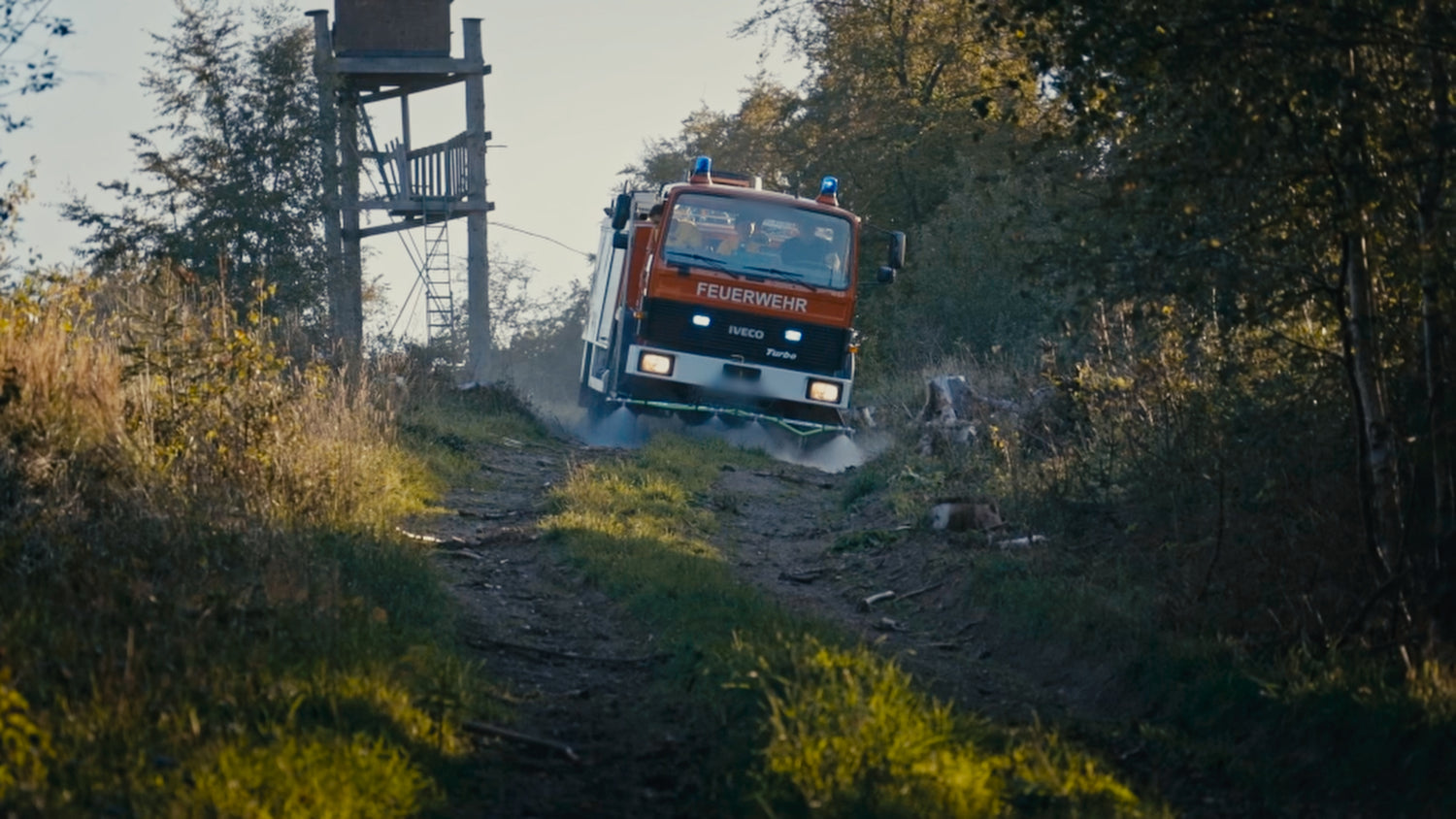
Sprühbalken zum Nachrüsten
Unser mobiler Nachrüstsprühbalken ist eine kosteneffiziente Möglichkeit, Bestandsfahrzeuge mit Pump and Roll-Fähigkeit aufzuwerten. So muss man nicht erst auf die nächste Fahrzeugbeschaffung warten.
Das Waldbrandset ist eine Erweiterung des SnakE-Set zur E-Auto Brandbekämpfung und kann dafür auch weiterhin uneingeschränkt genutzt werden.
Die kompakten Düsenmodule werden einfach auf den faltbaren Nachrüstsprühbalken aufgeklemmt und mit Federriegeln gesichert. Zusammen wird das ganze System werkzeuglos an den Schäkeln des Fahrzeugs befestigt.
In weniger als 3 Minuten, vom Auspacken bis zur Abfahrt, können Sie Ihren Fuhrpark mit dieser wichtigen taktischen Möglichkeit aufwerten.
Mit minimalem Personaleinsatz, können so schnell Schutzschneisen bewässert werden, um die Ausbreitung des Waldbrandes einzudämmen.

Mobiler Kreisregner
Das innovative SnakE® Modul, ausgestattet mit einer Kreisregnerdüse bietet effektive Unterstützung bei Waldbränden, Vegetationsbränden und beim Gebäudeschutz.
Stabile Fixierung am Baum oder Gebäude durch überall bereits vorhandene Spanngurte.
SnakE® ist das Leichteste Kreisregnersystem zur Baumbefestigung.
Darum ist SnakE die richtige Lösung für Sie:
-
⚙️ Modular
Die Modularität des SnakE ermöglicht eine flexible Anpassung an verschiedene Einsatzlagen.
Dadurch kann SnakE vielseitig für Waldbrände, Elektrofahrzeugbrände und andere Szenarien eingesetzt werden. Zudem erleichtert es die Nachrüstung, wodurch bestehende Fahrzeuge effizienter genutzt werden können.
-
📦 Kompakt verstaut
SnakE ist das kleinste und leichteste modulare Nebellöschsystem zur Kühlung von Hochvoltspeichern in Fahrzeugen. Das ganze System kann in einer einzigen Standard-Eurobox verlastet werden.
-
💡 Intuitiv
SnakE ist auch als Sonderlöschgerät intuitiv in der Bedienung und benötigt kaum Schulungsaufwand. So können sich die Einsatzkräfte auf das wesentliche fokussieren und wissen auch in Stresssituationen stets richtig
zu Handeln.
SnakE 6 Professional modulares Löschsystem









D-Schläuche Kuppeln
Module verbinden
Die einzelnen Düsenmodule werden mit speziell konfektionierten D-Schläuchen verbunden. So ist immer ein optimales Sprühbild gewährleistet und SnakE kann problemlos erweitert werden.

Aufklemmen
Befestigung Düsenmodule
Die Düsenmodule können auf einem speziell dimensionierten, klappbaren Aluminiumrahmen oder auf einer Steckleiter befestigt werden. Die Bauhöhe ist dabei so niedrig, dass man auch bei geplatzten Reifen noch unter die meisten gängigen Elektrofahrzeuge kommt.
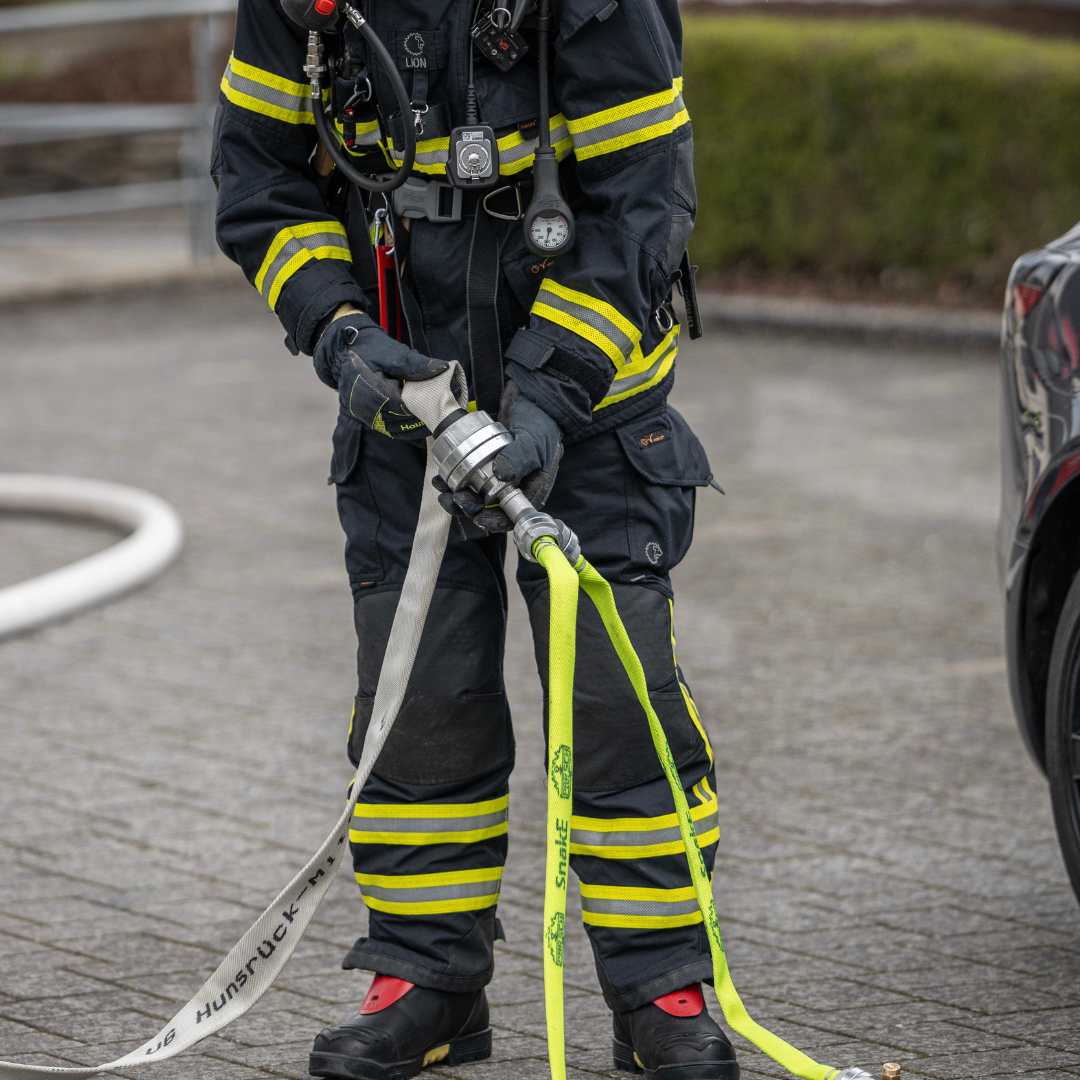
C-Schlauch Kuppeln
Wasserversorgung
Die Wasserversorgung erfolgt über einen C-Anschluss, der nach einem Filter auf zwei D-Abgänge aufgeteilt wird. So ist immer ausreichende Wasserzufuhr gewährleistet und die Düsen sind sicher gegen Verstopfen. So können die Düsen jederzeit das Wasser fein zerstäuben und somit bei reduziertem Wasserverbrauch, die Kühlleistung erhöhen! Jede Düse verbraucht dabei nur um die 20 Liter pro Minute.

Einfache Erweiterung
Sprühbalken
SnakE kann mit einer unkomplizierten Erweiterung von uns zu einem Löschbalken umgebaut werden. Das gleiche SnakE Set, kann somit jedes Pump and Roll fähige Feuerwehrfahrzeug mit einem Waldbrand-Sprühbalken aufrüsten. Ideale Unterstützung bei Vegetationsbränden, Ölspurbeseitigung oder Straßenreinigung.
Alle SnakE Varianten auf einen Blick:
-
SnakE-E-Autolöschsystem-Wandschrank
Normaler Preis €2.973,81 EURNormaler PreisGrundpreis / pro -
SnakE Waldbrand-Set - Sprühbalken und Kreisregner
Normaler Preis €2.922,22 EURNormaler PreisGrundpreis / pro -
SnakE Sprühbalken-Set
Normaler Preis €2.650,00 EURNormaler PreisGrundpreis / pro -
SnakE 6 Professional modulares Löschsystem
Normaler Preis Ab€2.474,80 EURNormaler PreisGrundpreis / pro
Einsatzgebiete und Technische Daten
-
Einsatzgebiete
⚡Elektrofahrzeug Unterbodenkühlung
🚿Dekontamination
💧Gasflaschenkühlung
🌫️Rauchgas-Niederschlagung
🌳Waldbrandbekämpfung
-
Technische Daten
⚖️2 kg
📦 Eurobox 60cm*40 cm
💧 3 bar: 72 l/min
💧 5 bar: 92 l/min
⚙️ max Druck: 16 bar
🚒 Wandhydrantenkompatibel
💎 Material: Edelstahl V4A
↔️ Wurfbreite 1405 mm
↕️ Wurfweite 1602 mm
Brandbekämpfung bei E-Fahrzeugen mit Lithium-Ionen Akku
Welches Löschmittel bei Elektrofahrzeugen?
Das von den Fachverbänden AGBF, vfdb und vom deutschen Feuerwehrverband empfohlene Löschmittel ist ganz klar: Wasser.
Wie bei der Brandbekämpfung von Fahrzeugen mit Verbrennungsmotor, ist es zielführend auch vereinzelt Löschschaum einzusetzen.
SnakE eignet sich sowohl für normales Wasser als auch für Löschschaum bzw. Netzmittel.
Welche Herausforderungen bietet das Löschen von Elektrofahrzeugen mit LiIon-Batterie?
Die Hochvoltbatterie bei Kraftfahrzeugen mit alternativen Antrieben bietet ein erhöhtes Risiko von Elektrounfällen. Die Hochvoltleitungen sind in der Farbe Orange gekennzeichnet und dürfen unter keinen Umständen durchtrennt werden!
Der Akku des Elektroautos ist meistens im Unterboden verbaut und somit schwer zugänglich, sodass unter normalen Bedingungen nicht viel Kühlwasser am Akku ankommt.
Das Risiko bei Lithium-Ionen-Akkus besteht in einem sogenannten Thermal Runaway, das bedeutet das viele Batteriezellen durch Kettenreaktionen sich gegenseitig entzünden. Der Schaden ist im Akku kaum zu lokalisieren.
Darüber hinaus weisen Fahrzeuge mit moderner Bauart generell eine höhere Brandlast auf und verbrennen mit höherer Energiefreisetzung und Rauchentwicklung.
Wieviel Waser sollte bei der Brandbekämpfung von Hochvoltspeichern in Fahrzeugen mit alternativen Antrieben verwendet werden?
Nach den neusten Empfehlungen der Deutschen gesetzlichen Unfallversicherung ist das Vorgehen bei einem Verkehrsunfall VU mit einem beteiligten Fahrzeug mit alternativen Antrieben wie folgt zu empfehlen.
Es empfiehlt sich frühzeitig zwei verschiedene Rohre einzusetzen, eins zur klassichen PKW-Brandbekämpfung und eins zur Kühlung der Lithium-Ionen-Batterie (LIB).
Zur effizienten Kühlung ist meistens schon eine geringe Wassermenge ausreichend.
Es wird empfohlen den Unterboden des Kraftfahrzeugs mit dem Hochvoltspeicher besser zu erreichen, um die Effizienz zu steigern und den Löschwasserverbrauch möglichst gering zu halten.
Quelle:
https://publikationen.dguv.de/widgets/pdf/download/article/3907
Welche Methoden gibt es bisher zur Brandbekämpfung bei Kraftfahrzeugen mit alternativen Antrieben z.B. Lithium-Ionen-Batterien?
- Nasse Qurantäne/Löschcontainer
- Löschlanze
- Löschdorn
- Löschdecken
- SnakE-Unterbodenkühlung
Wie lautet die Empfehlung der AGBF Bund zur Brandbekämpfung von Kraftfahrzeugen mit elektrischen Antrieben?
Nach den Empfehlungen der Fachausschüsse Vorbeugender Brand- und Gefahrenschutz und dem Fachausschuss Einsatz, Löschmittel und Umweltschutz der deutschen Feuerwehren aus der AGBG Bund wurde im Januar 2021 offiziell folgendes Vorgehen empfohlen.
Die Erstmaßnahmen zur Brandbekämpfung sind gleich zu einem normalen PKW-Brand: Kühlen mit Wasser und ggf. mit Löschmittelzusätzen wie Löschschaum oder Netzmittel.
Wichtig ist es, immer die aktuellsten Rettungsdatenblätter zu Rate zu ziehen.
Generell weisen moderne Fahrzeuge eine erhöhte Rauch- und Wärmefreisetzung auf.
Wenn es sich um ein Elektrofahrzeug handelt, sollte der Hochvoltspeicher mit einer Wärmebildkamera untersucht werden.
Das effiziente Löschmittel für die Brandbekämpfung bleibt Wasser.
Wenn bei der Kontrolle des Hochvolt-Energiespeichers im Elektrofahrzeug eine deutlich über der Außentemperatur liegende Temperatur gemessen wird, in Kombination mit einem stetigen Temperaturanstieg, ist nach aktueller Empfehlung das Gehäuse des Hochvolt-Energiespeichers mit Wasser zu kühlen.
Die Quarantänisierung ist explizit nicht Aufgabe der Feuerwehr. Die Deutsche gesetzliche Unfallversicherung (DGUV) rät in der neusten Fachempfehlung diese Methode nur im absoluten Ausnahmefall anzuwenden, da die Löschwasserentsorgung die Feuerwehren vor einen großen logistischen Aufwand stellt. Insbesondere eine präventive nasse Quarantäne ist zu unterlassen.
Es ist so lange die HV-Batterie im E-Auto zu kühlen und mit der Wärmebildkamera zu kontrollieren, bis das Fahrzeug an den Betreiber oder einen geeigneten Abschlepper übergeben werden kann.
Der Löscherfolg wird nur durch die Kühlwirkung des Wassers bewirkt.
Quelle:
https://www.agbf.de/downloads-fachausschuss-vorbeugender-brand-und-gefahrenschutz/category/28-fa-vbg-oeffentlich-empfehlungen?download=356:2021-01-fachempfehlung-elektrofahrzeuge
